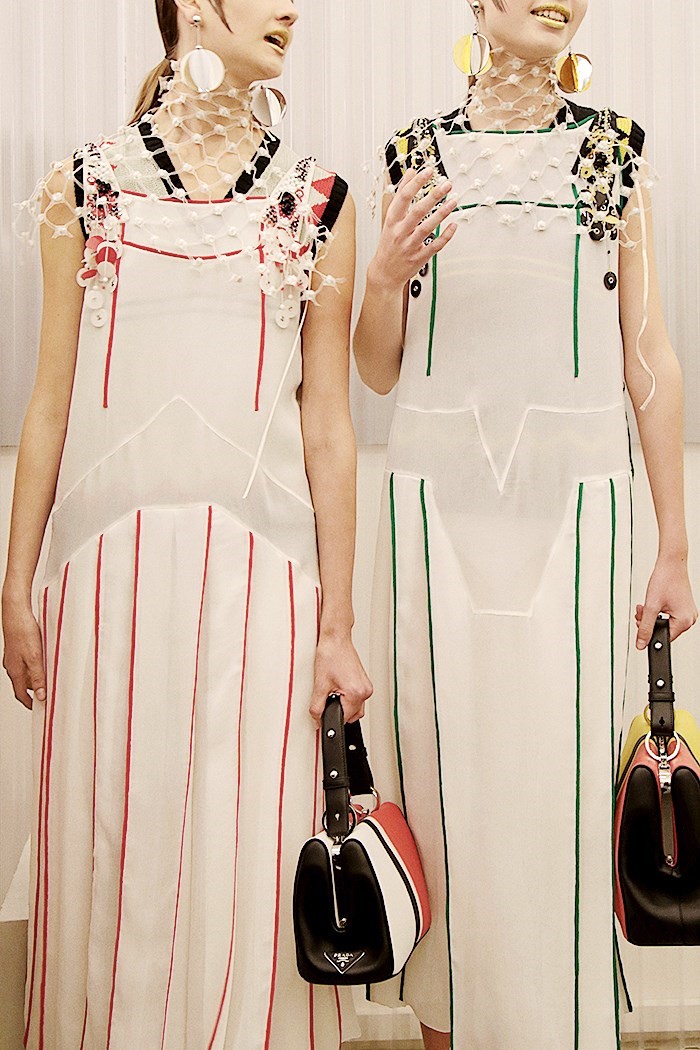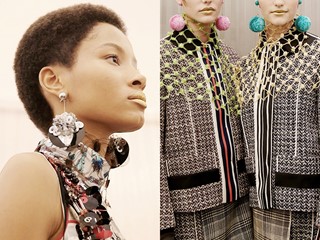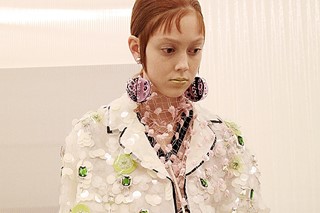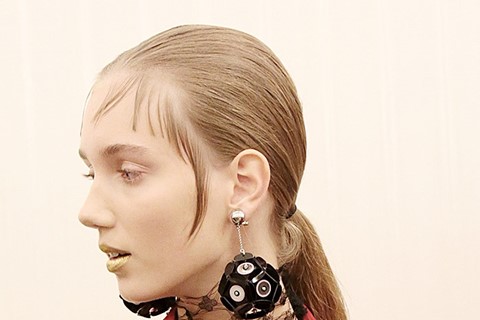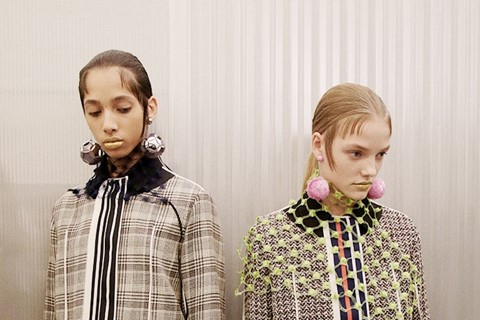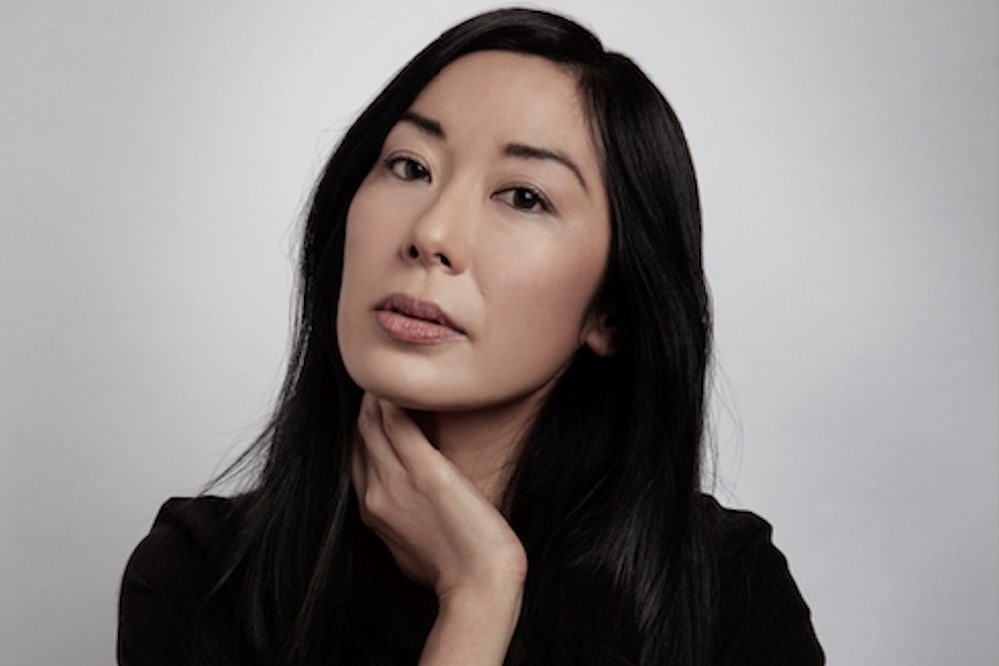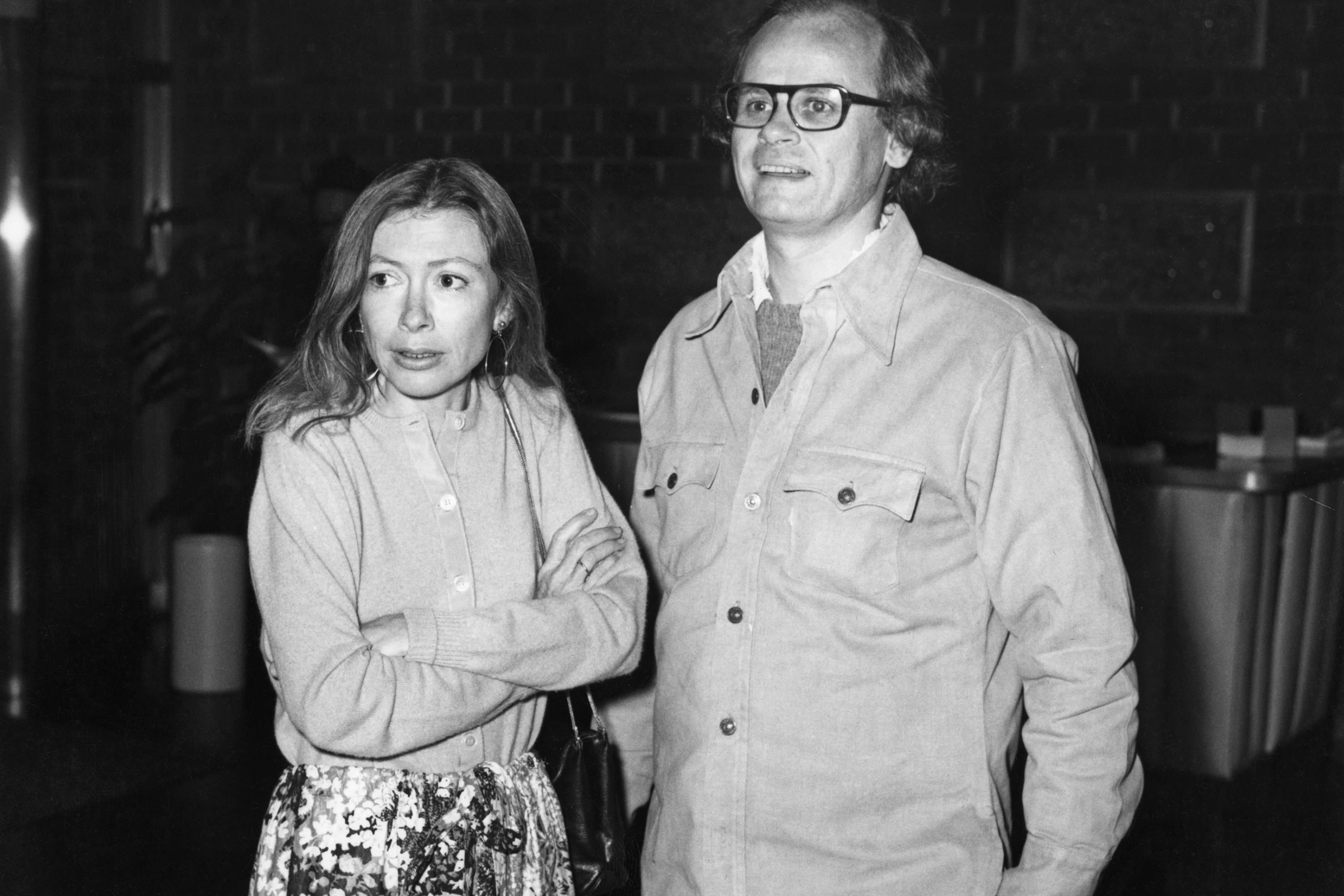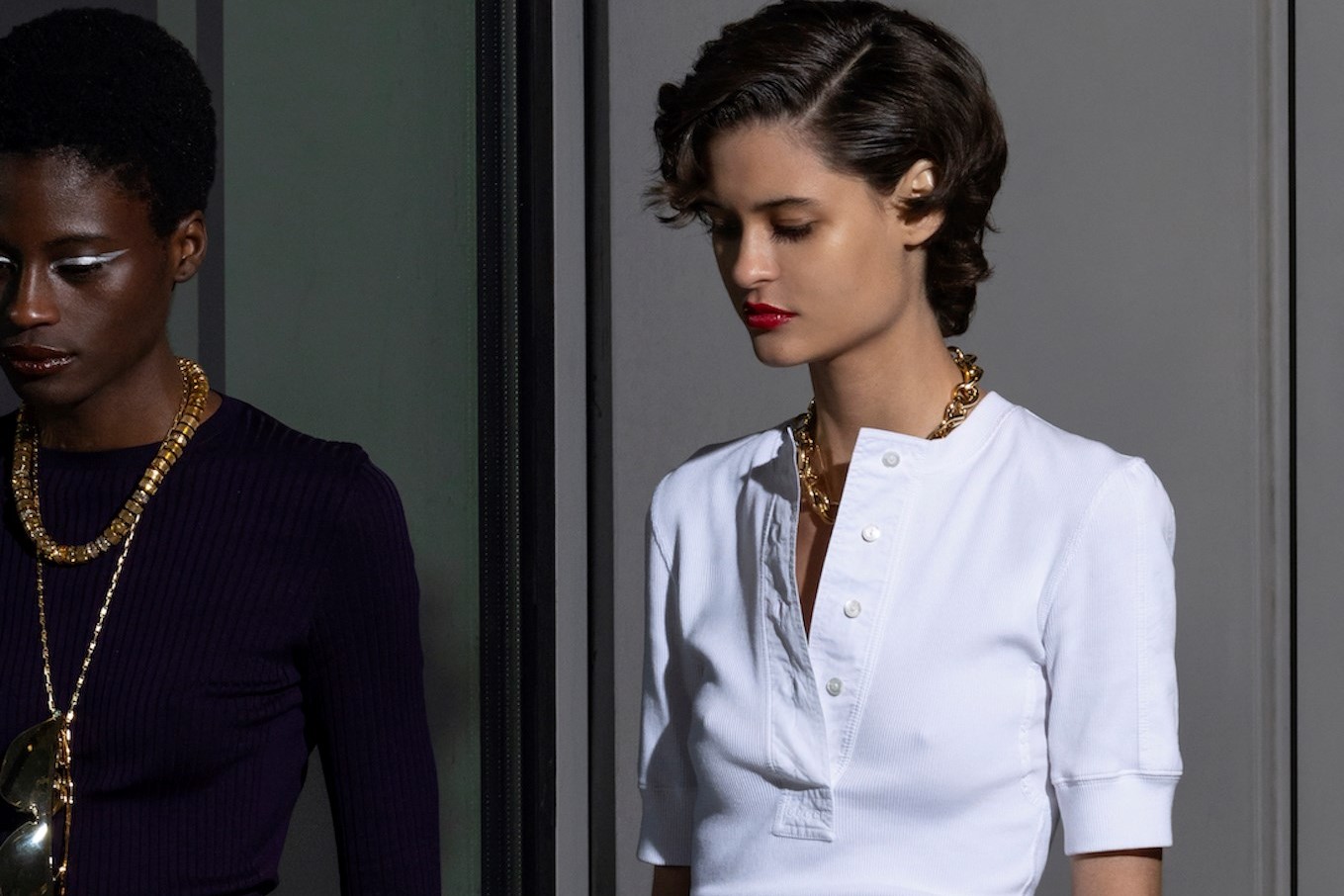Miuccia Prada was not present at the showing of her Spring/Summer 16 womenswear collection in Milan – and yet her presence could be felt everywhere. It was a Prada collection and show par excellence – both strangely familiar yet strangely strange. In OMA’s floating set, suspended sheets of curved and corrugated fibre glass and plastic were a ghostly mimic for a rougher, metal, real world version of events. So too were the clothes, where the bourgeois tweed suit became almost a delicate apparition, reworked in transparencies, sometimes intercut with aprons of original, traditional tweed. Then time would almost be literally sliced, in clothing made from strips of fabric in patent leather, fur, or the finest couture fabrics. Were these 20s Art Deco stripes? 60s youthquake signifiers? Signs of the sportswear of now? Or was this simply something of the future built on the many iterations of the past?
"Miuccia is always looking for the ‘tipping point’ – something slightly uncomfortable and unconventional. She has no fear in challenging people’s perceptions of beauty" – Guido Palau
What was taking place in fact seemed to be a rushing together of the past, present and future, an almost autobiographical overview from the person of Miuccia Prada – who was herself both there and not there (a personal emergency meant that she wasn't physically present at the show). Her long-term collaborator Frederic Sanchez’s auditory accompaniment was composed of ghostly snatches and layers of jazz, which he defined as “A disorientation of time, where your head is full of memories – fragments of a life.” The stylist of the show, Olivier Rizzo, described “Miuccia’s life as an eccentric clash of culture and knowledge. Where there are so many years of her looking at the world and of her being in the world.” The show’s hairstylist, Guido Palau, created hair that purposely traversed the lines of kiss-curled flapper, skin girl rebel and ‘baby-fringed’ scally girl, “There is an idea of tricking the eye – it could be seen as nostalgic but it isn’t," he explained. "There is always something else at work, something strange. Miuccia is always looking for the ‘tipping point’ – something slightly uncomfortable and unconventional. She has no fear in challenging people’s perceptions of beauty.” For Fabio Zambernardi, Miuccia Prada’s design director, “There were so many layers of information, but Miuccia ultimately thought it should be beautiful and chic. We simply wanted to do something chic for a Prada woman with experience and knowledge who likes beautiful clothes. That’s why Miuccia became obsessed with suits. Of course she gets bored of suits in a second! But that is why they also became an obsession for her.”
Prada perfection: Even when it's wrong, it must be absolutely right
“’Who is this woman who wears a suit? Is it too old? Is it wrong?’ Very often she likes to hate things. She hates things so much it suddenly becomes what she likes!” So says Fabio Zambernardi, of Miuccia Prada’s spin on the Socratic Method that is her design process. In the world of Prada, perfection is paramount, but this is a perfection that is not easily won: even wrongness has to be absolutely right.
“The sensibility, knowledge and knowhow at Prada – a creative, sensitive and emotional combination – is like nowhere else,” says Olivier Rizzo. “To work for somebody so incredible, so legendary and larger than life as Mrs Prada, together with the wonderful Fabio Zambernardi – it’s like heaven. With the fashion show you are constantly challenged in a good way; every fibre of your being is challenged creatively, emotionally and mentally. You question yourself so much and Miuccia Prada encourages rebellion as a state of mind – she is constantly questioning and challenging herself, she sets the example. It is her detail, thinking process and freedom that opens up everything, that looks at and creates all the possibilities. Everything has to gel for a show, everything – and the openness of mind and courage it takes for her thought and word process blows my mind.”
"Miuccia Prada encourages rebellion as a state of mind" – Olivier Rizzo
Of course, Miuccia Prada knew every finite detail and process of her latest show and collection – she was there until its ultimate completion. But perhaps where her spirit was most present was in the rebellious, chic, wrongness of it all – the sort of wrongness that only Miuccia Prada as a designer can make seem absolutely right, and right now. The figure of Tutankhamen and the 20s Egyptian revival could be found in those coats made of strips of gilded python and delicate suede, as well as in make-up artist Pat McGrath’s gold lips; the ghostly versions of 90s Prada past, made transparent in brown and orange stripes; the fabric veils draped across the models' chests, original fabrics from the 20s, unique and rare with a finite supply fully utilised for the show; the purposely plodding knits and prints layered underneath and throwing everything off… “When I was eight years old my grandmother decided to make me a sweater and asked me to choose the colours,” says Fabio Zambernardi. “I was very excited, so excited I actually could not choose… In the end I chose brown and yellow! As a kid Miuccia was also attracted to things that were so horrible and ugly, colours so wrong they become right.”
In the latest collection such wrongness of colouration was everywhere present, but particularly in the home-style domesticity of the knitted sweaters layered under elegant flapper dresses, or the ornately embroidered suiting of the finale. A touch of childlike domestic glee that could also be found in the key print of the show, again layered under elegant suiting or dresses, yet looking like a child’s bedspread or wallpaper. Here the details are a race car, a rabbit and a rocket – Miuccia Prada’s eldest son is a race car driver, the rabbit is for luck and the rocket for the future. Such autobiographical signs and symbols of Miuccia Prada can be found everywhere in the collection, as they can be in all of Pradaland – including one of its newest attractions: Fondazione Prada.
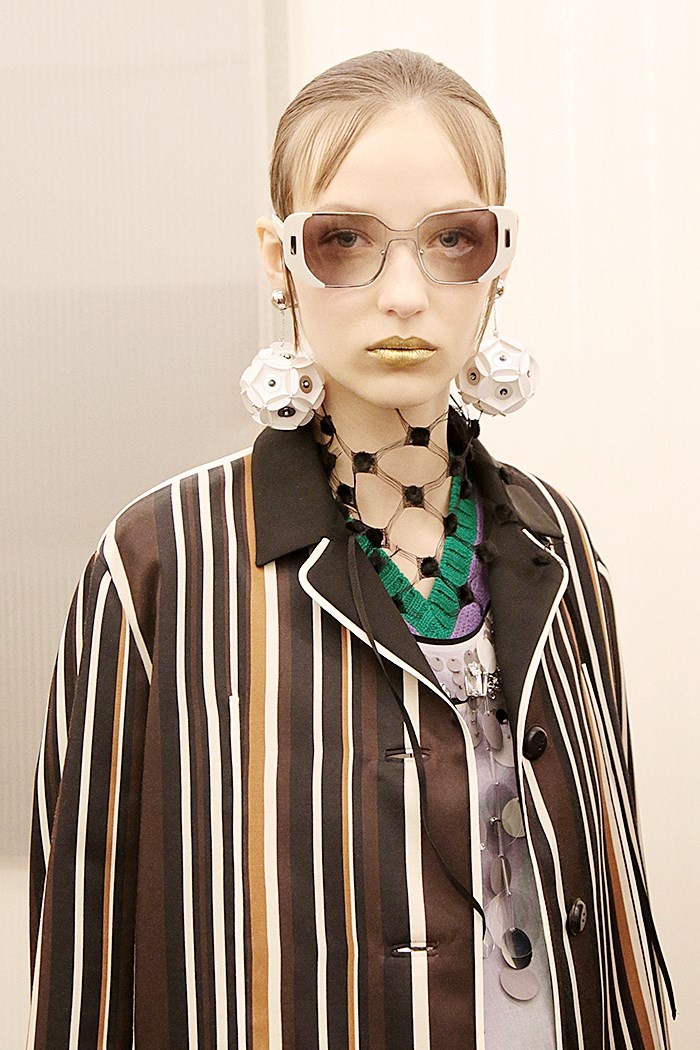
Prada-art-land: Fondazione Prada
On the outskirts of Milan, towards Linate Airport, lies the Prada Foundation. In a former industrial complex – a distillery dating back to the 1910s – Rem Koolhaas’ OMA has designed a home for the Prada Foundation and an art collection as idiosyncratic and personal as the S/S16 show. While other corporations present a fundamentally idealised, power view of themselves through art acquisitions to the outside world, Prada’s is distinctly different.
Weird, domestic, warm and witty – while at the same time displaying impeccable personal taste – it is perhaps the most revealing corporate art collection in the world; so wrong at projecting power, it’s absolutely right. Full of blind alleys, staircases to nowhere, nooks and crannies, it is almost as if the art is happened upon by accident at times in this diverse complex of buildings, giving the distinct feeling that you are exploring somebody else’s world, with particular clues to who these people actually are. And, quite frankly, they are mad people – in the best possible way. Less concerned with an ostentatious display of cold, blank power and more with a funfair flair for aesthetics as entertainment, the complex is dominated by a golden tower, only accessible at set times for restricted numbers, called the Haunted House. The Haunted House is home to a Louise Bourgeois installation from 1996 called Cell (Clothes). With traces of the artist’s life through clothing – from ghostly children’s clothes to elegant, grown-up eveningwear – it is perhaps the clearest link in spirit to the present Prada collection: an oddly moving, mixed media biography.
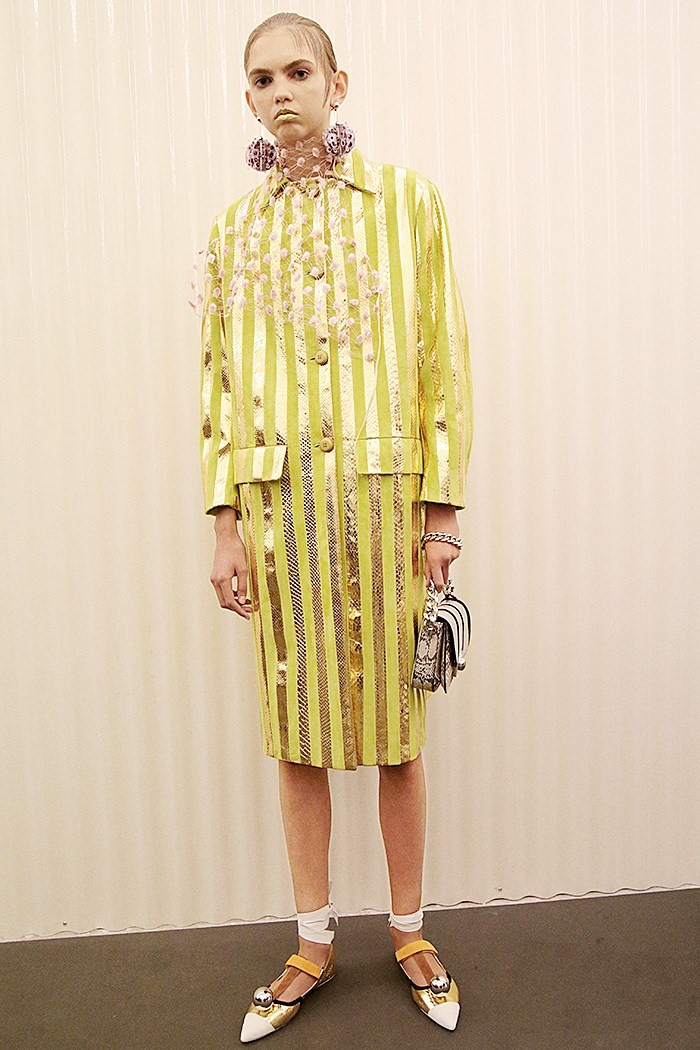
Downstairs, in one of the adjacent gallery buildings, is another clue to the present collection. In David Hockney’s Great Pyramid at Giza with Broken Head from Thebes (1963) is a figure seemingly wearing a coat from the show: a gold and green striped tunic, not unlike model Molly Bair’s look. In the Prada Foundation it is clearer than ever that Miuccia Prada is one of the great ‘brand auteurs’ and a ‘fashion imagineer.’ If any designer is making pop art today – and at this point it makes far more sense for it to occur in the realm of fashion than fine art – it could be credited to Miuccia Prada. With her synthesis of high and low, her unashamed embracing of the consumer experience mixed with a little bit of poisonous doubt in the sugar-candy desirability of her clothing, this commercial, self-referential form of pop becomes post-pop, and she is the Disney queen of it.
